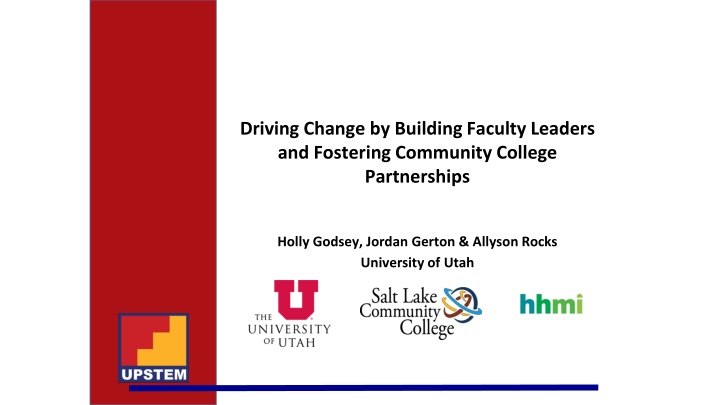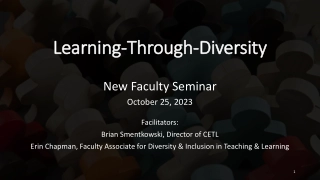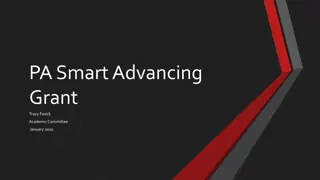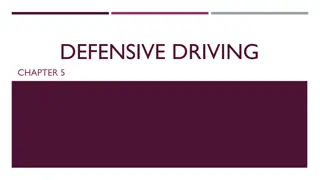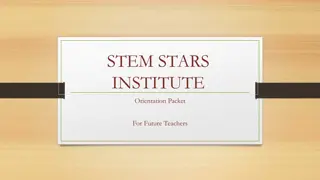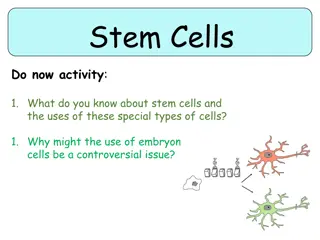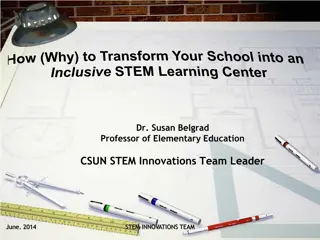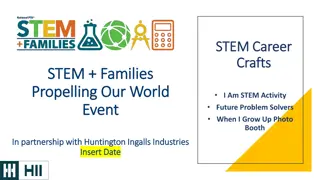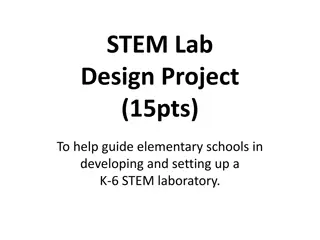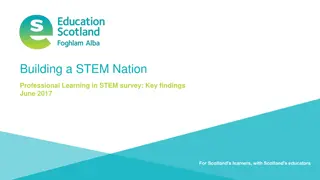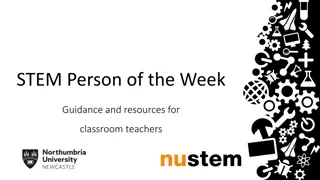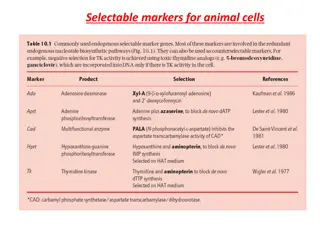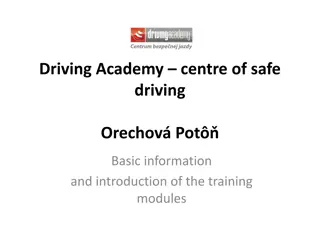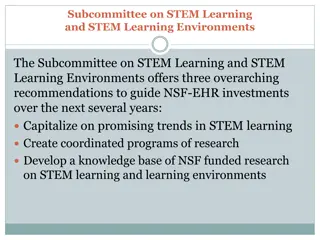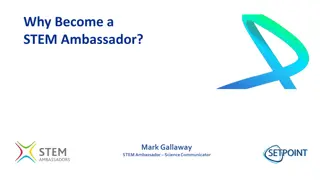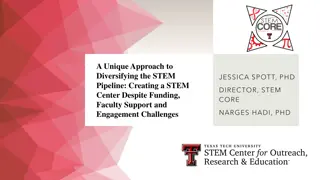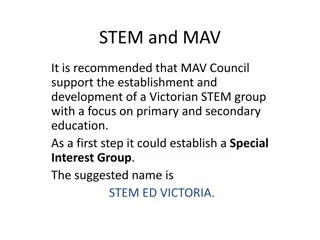Driving Change in STEM Education Partnerships
Driving change in STEM education through strategic partnerships and faculty leadership is crucial for addressing the attrition of transfer and marginalized students. The University of Utah's UPSTEM project focuses on building a supportive infrastructure to enhance student success and create inclusive pathways for underrepresented groups in STEM fields. By understanding the barriers to transfer student success and implementing data-driven decisions, the initiative aims to foster a more welcoming and empowering environment for all learners.
Download Presentation

Please find below an Image/Link to download the presentation.
The content on the website is provided AS IS for your information and personal use only. It may not be sold, licensed, or shared on other websites without obtaining consent from the author.If you encounter any issues during the download, it is possible that the publisher has removed the file from their server.
You are allowed to download the files provided on this website for personal or commercial use, subject to the condition that they are used lawfully. All files are the property of their respective owners.
The content on the website is provided AS IS for your information and personal use only. It may not be sold, licensed, or shared on other websites without obtaining consent from the author.
E N D
Presentation Transcript
Driving Change by Building Faculty Leaders and Fostering Community College Partnerships Holly Godsey, Jordan Gerton & Allyson Rocks University of Utah
Utah Pathways to STEM (UPSTEM) HHMI Inclusive Excellence project Partnership between the University of Utah and Salt Lake Community College Focused on building infrastructure to support transfer and marginalized students Intended outcomes include: A Faculty Learning Community (FLC) that provides support and training on inclusive practices A supportive culture for transfer and other marginalized students Fully articulated, clear academic degree pathways for transfer students Increased capacity to make data-driven decisions
What are we trying to change? Attrition of transfer and marginalized students in STEM due to: 1. Structural barriers intrinsic to STEM degrees 2. Unwelcoming environment for transfer and marginalized students (climate)
What are the barriers to transfer student success at your institution? Go to View Options in Zoom Select Annotate and choose either the text or pen tool
UPSTEMs Approach to Change Partner to Understand the Problem Barriers Stakeholders Inequities Levers Work at Various Structural Levels Individual/Course Department/College Institution System Reevaluate Measures of Success Take time to reflect Be flexible Be Patient Change takes time Celebrate imperfect progress by imperfect agents of change
Partner to Understand the Problem Data Sharing MOU De-identified student data dating back to 2014 Preparation indicators (High school GPA, ACT/SAT scores) College-ready math and English indicators Actual math entry points Pell status First generation status Course taking patterns Stop out points Success in subsequent courses Success post-interventions (Trio, HIPs, etc.) Aggregate data for demographically matched control group Cross-walk maintained by U and SLCC s Offices of Institutional Analysis 5 year renewal
Partner to Understand the Problem Critical Players in Crafting a Data Sharing MOU Registrar Chief Academic Officer Office of Institutional Analysis Faculty
Structural Barriers Intrinsic to STEM degrees Partner to Understand the Problem Presumed calculus readiness Stacked prerequisites Gen Ed completion requirement for AS degrees Lack of flexibility Lost/excess credits Extended time to graduation Depletion of financial aid Delayed employment Cognitive/psychological toll
Excess credit hours and low graduation rates are a problem for transfer students Partner to Understand the Problem Bachelor Degree Completion Rates 55.91% 60.00% 2011-2012 Biology Students at SLCC 44.44% 50.00% White Minoritized ethnicities and races 40.00% N=633 75% White 25% Minoritized ethnicities and races 30.00% 15.48% 14.85% 20.00% 10.00% 0.00% BS degree completion at any institution BS degree completion at U of U Time to Bachelor s Degree Completion SLCC Semesters U of U Semesters Total Semesters White 9.2 7.01 16.21 Degree Minoritized 9.38 7.5 16.88 White 8.07 4.36 12.43 No Degree Minoritized 11 4.8 15.8
Partner to Understand the Problem Unwelcoming environment for transfer and marginalized students (climate) Climate assessment Transfer student stigma Commitment to diversity and inclusion but few allyship behaviors Faculty report using inclusive teaching practices more than students report experiencing them Institutional data (Fall 2020) Transfer students enter science at U at similar rates as other disciplines Transfer students represent 11% fewer of graduates in science compared to other disciplines
Work at Various Structural Levels Systemic challenges require multiple levels of action Faculty Learning Community Climate Assessment Data Sharing Agreement Articulation Teams Individual X X Course X X X X Department X X X X College X X X X Institution X X X System X X
Work at Various Structural Levels Articulation Teams Disciplinary teams from both institutions Year-long investigation of curriculum, course sequencing, learning outcomes and student success measures Reflection critical to process Affected change at course, department, college & institutional levels
Work at Various Structural Levels Articulation Team Outcomes New course sequencing for AS degree Collaboration on new courses BIOL 1610 Science onboarding course Model for Transfer Pathways Program Potential collaborations on student research projects Science Research Initiative S-STEM program New AS of Pre-Science (APS) degree Includes math and other prerequisite courses as electives Shifts some general education requirements to transfer institution System-wide interest
Work at Various Structural Levels Faculty Learning Community Intended to help faculty: 1. Utilize inclusive teaching strategies in their classrooms; 2. Implement effective mentoring and advising strategies with students and colleagues; 3. Articulate steps, and advocate for cultural, departmental and institutional change towards inclusion in STEM; 4. Be leaders of inclusive practices in the classroom and in their STEM field.
Work at Various Structural Levels Faculty Learning Community Outcomes Individual/Course Level Change Inclusive teaching, mentoring and leadership skills Math for Engineers and Science Onboarding course (potential) Database of vetted inclusive online teaching resources Course level climate-surveys Department/College Level Change Recommendations to dean for PD, changes to course and peer evaluations, college EDI committee, etc. Two new FLCs (SLCC and College of Mines & Earth Sci) Institutional Level Change StoryCorps project highlighting experiences of diverse faculty and staff Research opportunities for transfer students Foundation for including EDI work in RPT criteria
Reevaluate Measures of Success Lessons Learned Things we did well Things we would do differently Informed upper admin of grant and intentions Collected a baseline analysis of college climate Established definitive measures of success Established autonomy and culture of trust among articulation teams & FLC Communicated within teams about progress and outcomes Involve upper admin in planning and process Involve dean and chairs in designing assessment Be more creative about how we defined success Encourage teams to be more reflective and less task- driven Maintain better communication with leadership
Lessons Learned (cont.) Be Patient Things we are still trying to figure out how to do Institutionalize FLCs Maintain cross-institutional articulation teams Measure & communicate success to different stakeholders Build upon new infrastructure to recruit and support students Prioritize inclusion of transfer and marginalized students in aspects of system Let go of our project
Summarizing Keys to Success Involve partners and stakeholders early in process Identify how inequities are present in your institution (data) Activate levers for change at different structural levels Identify realistic measures of success (be creative) Be patient (this is a long game)
Thank You! Questions?
